Char Pots
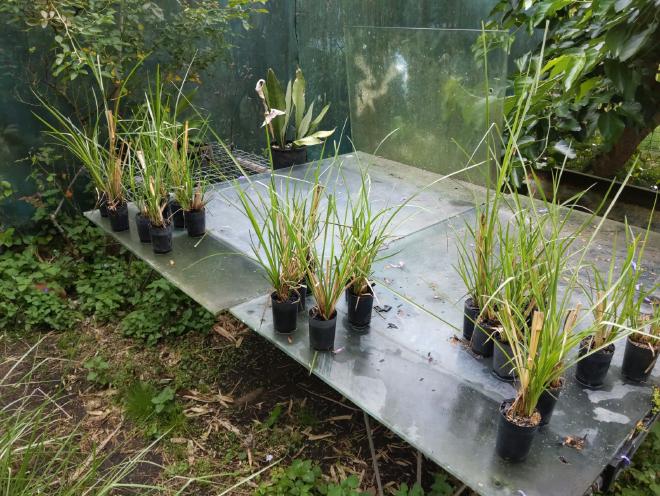
When using Vetiver in degraded or difficult to maintain areas, sometimes using potted stock can give more reliable results as the slips will be fully rooted and established when planted out. This can increase survivability and growth rate of new plants. There is a chance, or a low percentage, of bareroot slips dying before they take which requires a second visit to close gaps with new slips. Potting stock uses soil or potting media and pots or bags which can be expensive at scale or requires more resources than a bareroot slip.
As one of the benefits to using Vetiver is the low resources, low cost, and the low impact of simple divided slips, reducing reliance on carbon-intensive or more extractive medias could be a positive in using potted stock in limited quantities. A lot of Vetiver practitioners have trialled potting media types and I won’t repeat their works here but the general rule of thumb is that Vetiver is adapatable to many soil/media types and following general horticultural practice will garner excellent results.
With this in mind, I decided to trial biochar in pots as a regenerative media alternative created through the pyrolysis of bamboo in a flame-shielded kiln. As this was just a simple experiment, the methodology was lacking and no control of raw char was put in place. The hypothesis was whether or not just simply enriched char could be a viable means of creating a root system from a bareroot slip for planting purposes.
Char was processed in terracotta and concrete pots with human urine at intermittent intervals for approximately 2 weeks. Then recycled duck water (drinking and pond) was poured over the char for a period to clear salts. Left alone for a time, the experiment began with leftover slips that fit the available pot size. The slips were of varying quality and size.
Group 1 was processed char crushed with hands and mixed with char-enriched vermicompost.
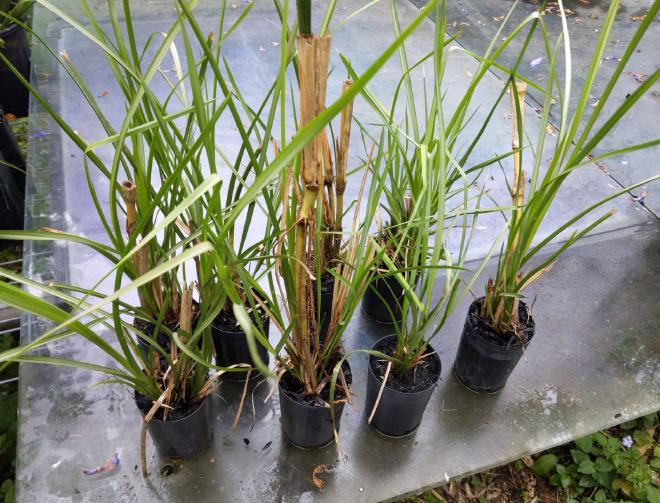
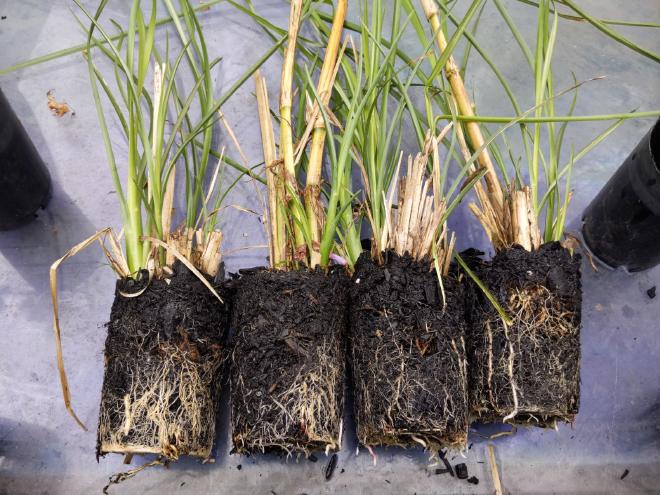
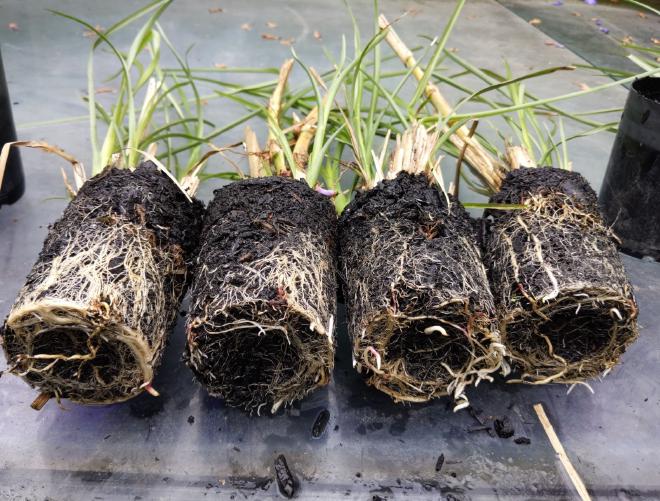
Group 2 was just processed char crushed with hands and potted up.
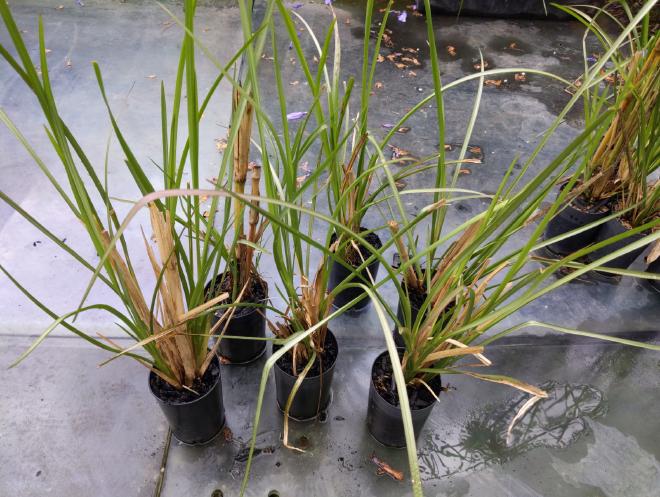
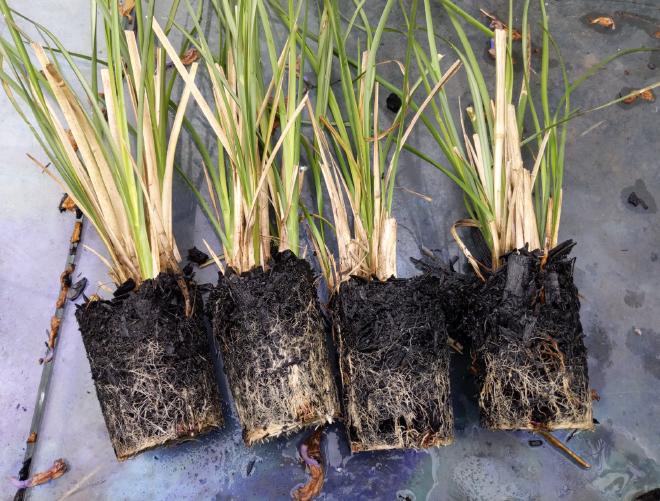
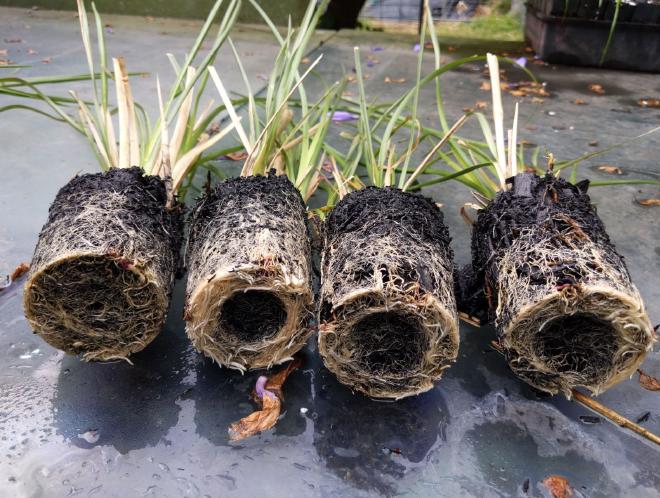
Group 3 was processed char crushed with hands and mixed with 25% sand.
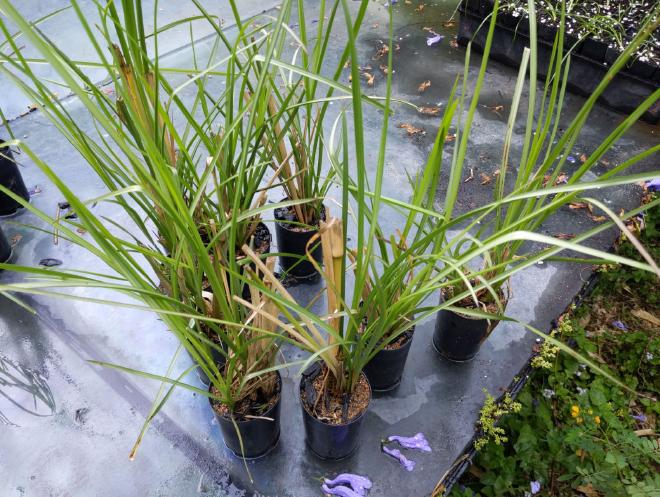
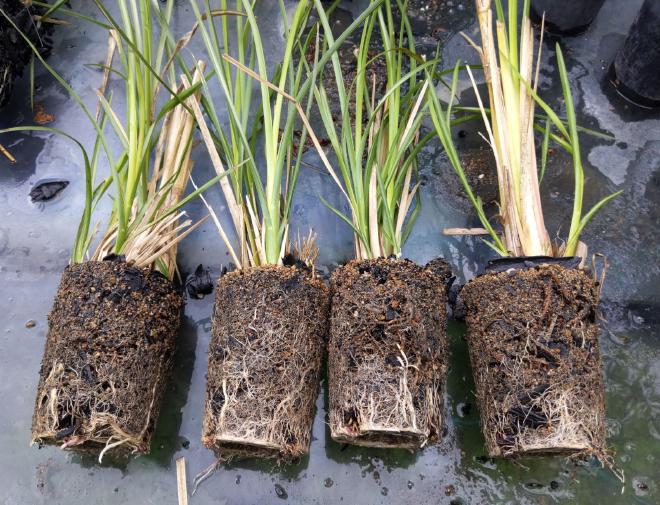
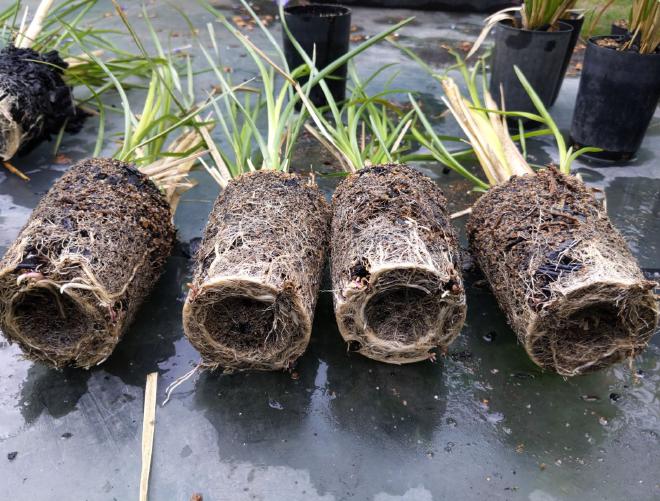
As the reader can see, the differences are almost imperceptible. With an unknown amount of personal bias, Group 1 may be slightly greener than Group 2 + 3, has slightly more tillering (new shoots), had slower root development early on and slightly less development compared to the others at the end. Group 1 also had weed germination due to castings in top level of pot. Root development is often shorter in Vetiver exposed to nutrients.
Group 2 and 3 rooted well with Group 3 appearing slightly more full of fine roots. Group 2 pots were light compared to 3 because of sand content. As watering was regular, one could wonder if Group 2 would dry faster than others due to the greater pore space not being filled by sand or castings and a finer crushed char may balance that out.
Group 2 could possibly be the least healthiest plants but I believe they would recover quickly when planted out so the benefit of needing the least additives makes it the most intriguing. Could enriched char, say like from a floor of a chicken coop or a greywater outflow, make a good media for potted stock in places with low resource requirements? Coupled with recyclable pots, would it be even better for that pesky headcut or steep slope where potted stock may make a significant difference?